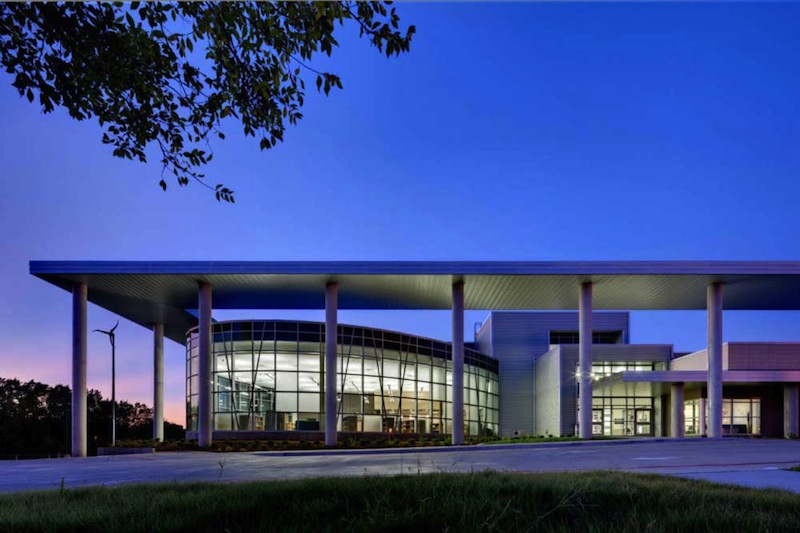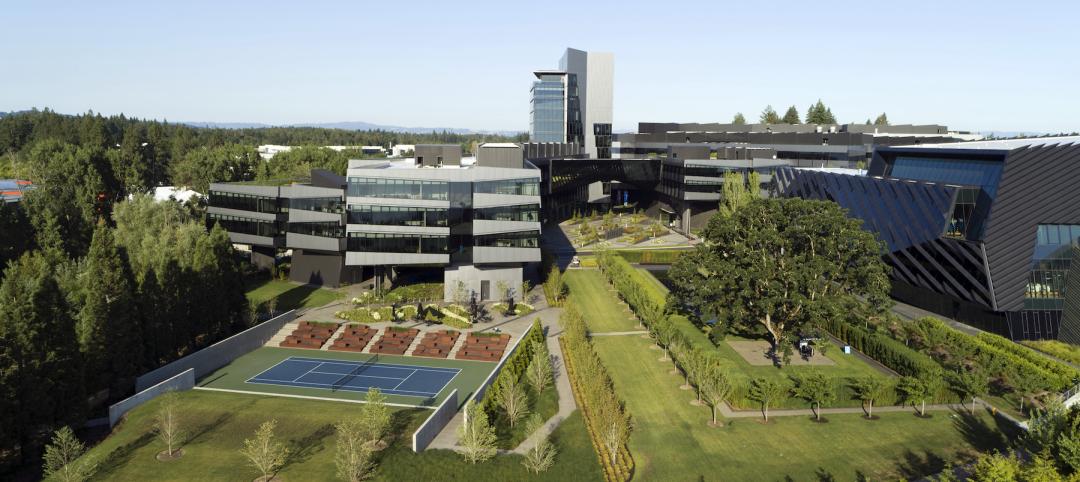The Center for Green Schools at the U.S. Green Building Council (USGBC) today announced its third annual “Best of Green Schools” list, which recognizes top educational institutions, individuals and initiatives across the country for environmental efforts.
“In reviewing the nominations for the Best of Green Schools 2013 list, what we experienced more than anything was profound gratitude for the thousands of champions who are catalyzing the green schools movement and demonstrating to the nation and the world that where our children learn matters,” said Rachel Gutter, director of the Center for Green Schools at USGBC. "This list represents exemplary leadership from schools, campuses, students, policy makers and more who are raising the bar when it comes to creating healthy, safe and resource-efficient schools.”
The Best of Green Schools list highlights schools, individuals and communities working toward the common goal of healthy, high-performing learning places for all. The list recognizes the hard work being done across the country to make schools better and honors the best examples in the green schools movement.
The recipients of the Best of Green Schools 2013 include:
K-12 School – Lady Bird Johnson Middle School (Irving, Texas): LEED Gold Lady Bird Johnson Middle School is the first net-zero energy school in the state of Texas. At 152,250 square feet, the campus is the largest net-zero educational facility in the country.
Higher Education Institution – Emory University (Atlanta, Ga.): Emory University has identified sustainability as one of its top priorities — to help restore the global ecosystem, foster healthy living and reduce the university’s impact on the local environment. Emory has among the highest number of square feet of LEED-certified space of any campus in America.
Ambassador – Lori Braunstein, Delaware Valley Green Building Council (DVGBC): As director for green schools at DVGBC, Braunstein has developed an effective and comprehensive strategy for engaging and supporting teachers, students, facilities managers and administrators around sustainability programs in schools. She also initiated the statewide Pennsylvania Green & Healthy Schools Partnership to bring together key stakeholders from the green building, environmental education and health and wellness fields around an agenda for green and healthy schools.
Policy Maker – Colorado state Sen. Andy Kerr: Kerr has been one of the strongest proponents of green schools in Colorado and throughout the country for many years. In the spring of 2013, he successfully passed SB 13-279, requiring all school districts in Colorado to build new schools or to reconstruct schools to the highest possible energy efficiency.
Moment for the Movement – California Proposition 39, the Clean Energy Jobs Act: Under the landmark Clean Energy and Jobs Act, $2.5 billion over the next five years will be directed toward energy efficiency projects and repairs to promote healthy, high-performing schools in California.
Business Leadership – Houghton Mifflin Harcourt (HMH): HMH is helping to transform learning environments by driving the conversation around sustainability education and the Common Core. HMH also serves as a partner of the Center for Green Schools’ Green Apple program, making a financial contribution in honor of school customers who switch from physical textbook samples to the (greener) virtual alternative.
Community Event – Green Apple Day of Service event at Duckett’s Lane Elementary School (Elkridge. Md.): Grimm +Parker Architects joined Dustin Construction and the students, principal and staff of Duckett’s Lane Elementary School on Sept. 29, 2013, to host and coordinate a student-led scavenger hunt for environmental features in and around the new school. Stations were set up to demonstrate how the building and site are teaching tools for their environmental literacy curriculum.
Collaboration – Celebrate Sustainability: This "green partnership" is among Virginia Tech, the town of Blacksburg, Va. and Sustainable Blacksburg, a local citizen's group in the town. Every year, the three organizations come together to program a week's worth of events that recognize and celebrate the sustainability achievements of the school and the town over the previous year.
Transformation – The Green Schools Academy (as led by Jenna Cramer, vice president of green schools for the Green Building Alliance): The Green Schools Academy program brings together private, public, parochial and charter schools to work toward a culture of sustainability and transformation in healthy schools for all children.
Student Leadership – Bluegrass Youth Sustainability Council (Fayette County, Ky.): The Bluegrass Youth Sustainability Council (BYSC) is a project-based organization composed of students from all Fayette County high schools. The BYSC meets monthly to discuss collaborative environmental outreach projects, partnership prospects and leadership and post-secondary opportunities in all areas of sustainability including energy management, outdoor classrooms, waste management, water quality and air quality.
Please visit centerforgreenschools.org/bestof2013 for more information on each of this year’s recipients.
Related Stories
| Aug 3, 2022
Designing learning environments to support the future of equitable health care
While the shortage of rural health care practitioners was a concern before the COVID-19 pandemic, the public health crisis has highlighted the importance of health equity in the United States and the desperate need for practitioners help meet the needs of patients in vulnerable rural communities.
Reconstruction & Renovation | Aug 3, 2022
Chicago proposes three options for Soldier Field renovation including domed stadium
The City of Chicago recently announced design concepts for renovations to Soldier Field, the home of the NFL’s Chicago Bears.
Codes and Standards | Aug 2, 2022
New tools help LEED projects reach health goals
The U.S. Green Building Council now offers tools to support the LEED Integrative Process for Health Promotion (IPHP) pilot credit.
Market Data | Aug 2, 2022
Nonresidential construction spending falls 0.5% in June, says ABC
National nonresidential construction spending was down by 0.5% in June, according to an Associated Builders and Contractors analysis of data published today by the U.S. Census Bureau.
K-12 Schools | Aug 1, 2022
Achieving a net-zero K-12 facility is a team effort
Designing a net-zero energy building is always a challenge, but renovating an existing school and applying for grants to make the project happen is another challenge entirely.
Codes and Standards | Jul 29, 2022
Few projects and properties are being built beyond code
Clients and architects disagree on how well building to code provides resilience, according to a recent report by the American Institute of Architects (AIA) in partnership with Owens Corning.
Headquarters | Jul 29, 2022
Nike HQ’s newest, largest structure: the Serena Williams Building
In Beaverton, Ore., the new Serena Williams Building, at just over 1 million square feet, is the largest structure at Nike World Headquarters.
| Jul 28, 2022
Fanning Howey hires Dennis Bane, AIA, as Project Executive
Fanning Howey, an architecture, interiors and engineering firm specializing in learning environments, has hired Dennis Bane, AIA, ALEP, to serve as a Project Executive for the firm’s Indianapolis office.
Multifamily Housing | Jul 28, 2022
GM working to make EV charging accessible to multifamily residents
General Motors, envisioning a future where electric vehicles will be commonplace, is working to boost charging infrastructure for those who live in multifamily residences.
Urban Planning | Jul 28, 2022
A former military base becomes a substation with public amenities
On the site of a former military base in the Hunters Point neighborhood of San Francisco, a new three-story substation will house critical electrical infrastructure to replace an existing substation across the street.

















